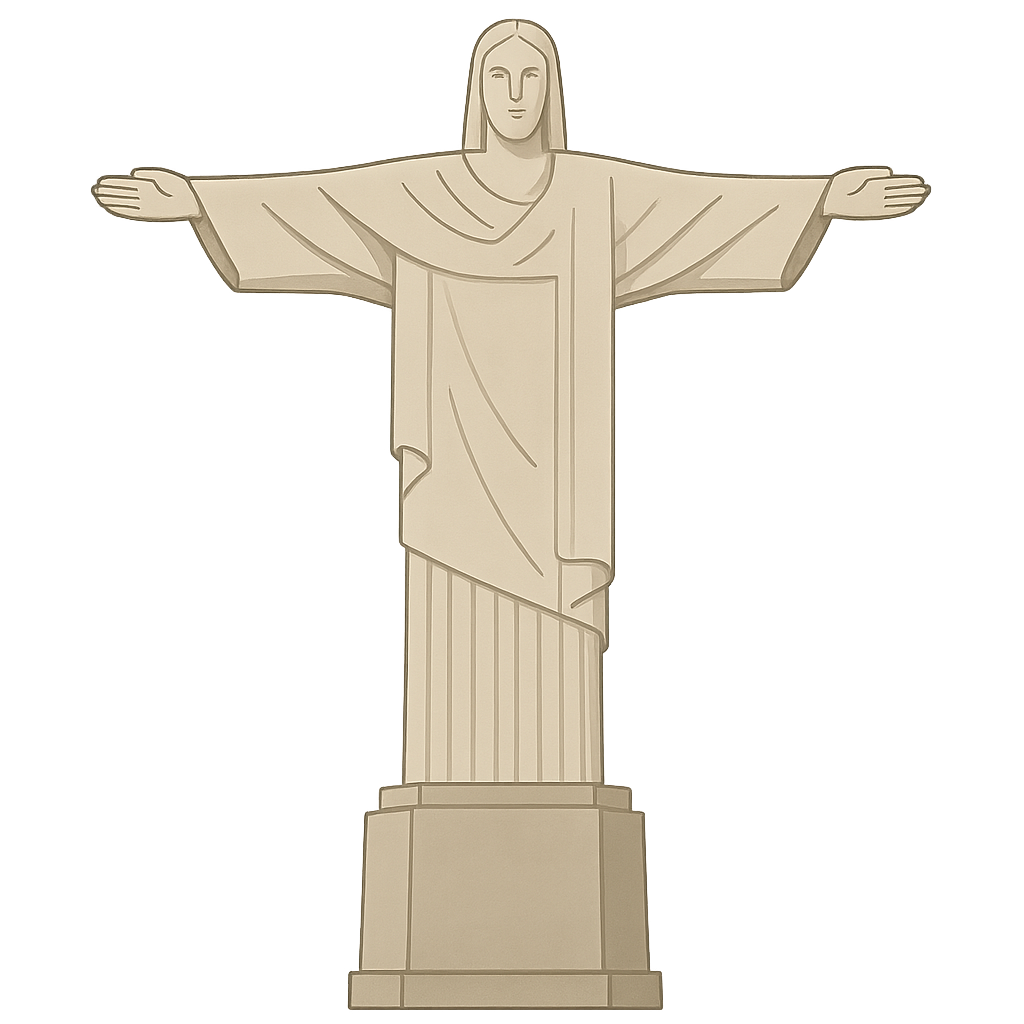The Stone Hug on the Mountain
From my perch high above the world, the clouds often feel like a soft, white carpet swirling around my feet. I stand on the very peak of a steep mountain, and the sun feels warm on my stone skin. Far below, a magnificent city sparkles. I can see sandy beaches curving along a bright blue ocean, and other green mountains rising like sleeping giants. One of them looks just like a cone of sugar, so they call it Sugarloaf Mountain. The city of Rio de Janeiro spreads out below me like a giant, colorful map filled with tiny cars and busy people. My arms are always stretched wide, reaching out over everything in a giant, welcoming hug that never ends. I am a guardian, a friend, a symbol of peace. I am Christ the Redeemer, or as the people who love me here call me, Cristo Redentor.
My story began long before my first stone was ever laid. The dream of a great monument on this mountain, called Corcovado, started way back in the 1850s. A kind priest named Pedro Maria Boss looked up at this peak and imagined a beautiful religious symbol watching over the city. His idea was wonderful, but for many years, it remained just a dream. Then, the world went through a very sad and difficult time called World War I. After the fighting ended, the people of Brazil felt a deep need for a symbol of peace and hope. They remembered the priest's old dream. In the 1920s, the idea was brought back to life, and this time, everyone wanted to help. The Catholic community organized a huge effort, and people from all across the country gave money to make the dream a reality. It wasn’t a gift from a king or a president; it was a project built by the love and small donations of a whole nation.
Building me was an incredible adventure. My construction began in 1922 and took nine years to complete, finishing in 1931. A brilliant Brazilian engineer named Heitor da Silva Costa was the one who designed my final shape with open arms. But I am a citizen of the world. My head and my hands were actually created far, far away in Paris, France, by a talented sculptor named Paul Landowski. They were carefully packed and sailed all the way across the Atlantic Ocean. My body is made of super-strong reinforced concrete, but my skin is something special. I am covered in a beautiful mosaic made of thousands and thousands of tiny, triangle-shaped soapstone tiles. Workers glued each one on by hand. Getting all my giant pieces up this steep mountain was a huge challenge. A special train, the Corcovado Rack Railway, which had been climbing the mountain since 1884, had to carry every heavy block of concrete and every delicate tile to the top. Brave workers then assembled me piece by piece, high in the sky, with the whole city watching below.
On October 12, 1931, I was finally finished and officially opened to the world. Since that day, I have watched over Rio through sunny days and stormy nights. I have seen the city explode with color and music during its famous Carnival parades. I have felt the ground shake with cheers during exciting soccer games. I have also been a quiet place where people come to feel calm and hopeful. In 2007, something amazing happened. People from all over the globe voted to name me one of the New Seven Wonders of the World. It was a great honor, but my real purpose has never changed. My open arms are not just for the people of Rio de Janeiro. They are for everyone, everywhere. I am a constant reminder of peace, hope, and what people can achieve when they work together. I will always be here, welcoming the world with a hug made of stone.
Reading Comprehension Questions
Click to see answer
